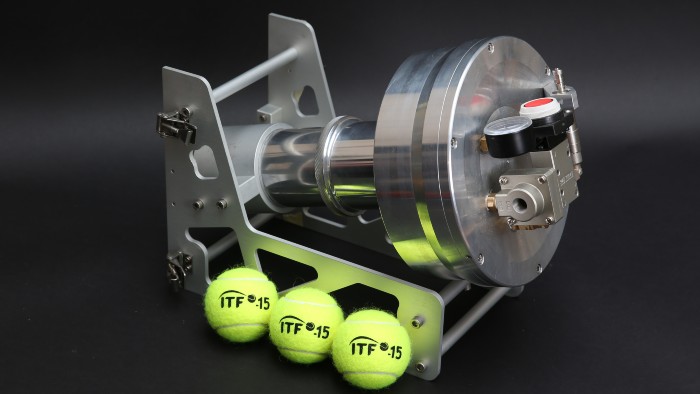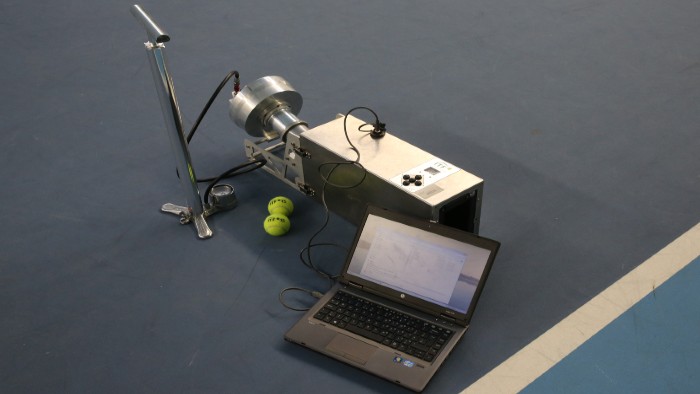The Sports Engineering Research Group developed a new method for surface pace testing, significantly reducing the size of the equipment so that it could be easily transported on flights rather than needing to be shipped. This allowed the ITF much more flexibility, responsiveness, and efficiency with its court pace testing ensuring a fair competition across Davis Cup ties.
Introduction
The ITF maintain the rules of the game of tennis. This includes approving equipment and playing surfaces for competitive use. In particular, the playing courts chosen by home nations in the Davis Cup and the Billy Jean King Cup (formerly Fed Cup) ties must have a Surface Pace Rating within an accepted range to maintain fair play in the competition.
Surface Pace Rating is a metric that represents how 'easy' it is for a player to strike the ball after a bounce. It includes both the speed of the ball after impact with the court surface relative to the speed of the ball before the impact and how high the ball bounces. A 'fast' surface will have a high relative speed and a low bounce, and a slow surface will have a low relative speed and a high bounce.
The problem
Typically, many Davis Cup or Billy Jean King Cup ties are played simultaneously across the world. To test the courts, the ITF must transport the required equipment to the court. Previously, the equipment was bulky and needed to be shipped and the ITF did not have the capacity to cover many of the ties.
Solution
The Sports Engineering Research Group designed and built new equipment to carry out the pace testing. To launch the ball, a compact ball cannon that can be pressed using a hand pump was designed and built. The cannon is easy to transport and use and the high accuracy of the cannon ensured a reliable ball impact position on the court. The reliable impact location allowed a compact design for a device containing 16 light gates to measure the inbound and outbound trajectory of the ball.







